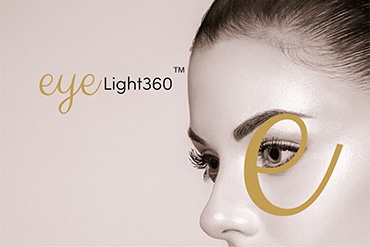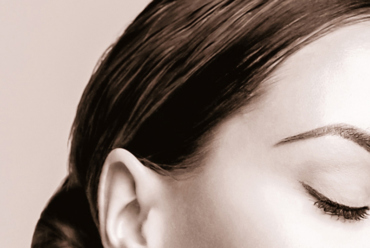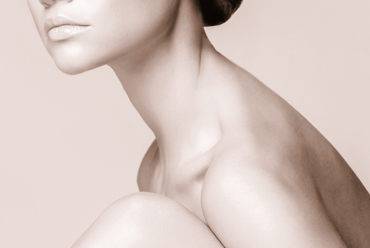Facelift
Facelifts, also known as rhytidectomy surgery, are one of the many solutions men and women consider to combat the signs of ageing. This procedure will help you retain your youthful appearance and (literally) put your best face forward. Dr Nerina Wilkinson’s aim is to help patients look natural and refreshed.
The modern shift in facial aesthetics is to approach surgical rejuvenation of the whole face, contouring the areas to regain a natural more youthful, and beautiful face. This can only be achieved by lifting the sagging tissue using the traditional facelift techniques in combination with replacing volume ((such as with Nerina’s signature StemCell4DLift). A facelift that is performed with only skin tightening results in the feared windswept face is seen in celebrities in the past.
Combining facelift surgery with midface volume replacement yields dramatic yet natural-looking results. Dr Nerina Wilkinson’s goals of midface rejuvenation in conjunction with a facelift, therefore, involves reestablishing malar volume and smoothing the transition between the eyelids and cheeks using your own fat which she loves to call liquid gold (see structural fat grafting).
The results are therefore a continued youthful appearance that is maintained over many years, by highlighting the cheekbones and redefining the jawline, softening the hollows under the eyes and lifting the brows naturally by volumizing the brows and forehead and opening the eyes without changing their shape which often resulted with previous surgical procedures.
Dr Nerina Wilkinson has recently moved beyond a traditional 3D facelift to a 4D approach where she discusses involving the continued treatment of facelift patients with injectable filler materials and muscle relaxing injections for years after their surgical procedures. This “four-dimensional” method achieves persistent, natural-appearing results that can be maintained successfully and dynamically over time.
Most patients will often also require “eyelid correction” and sculpting of the neck with neck liposuction in conjunction with a facelift.
Learn More
Frequently Asked Questions
What Is A Facelift?
hytidectomy, known more commonly as a Facelift, is a relatively major surgical procedure done to remove excess skin and fat from the face and neck. As people age, the effects of gravity, exposure to the sun and the stresses of daily life can be seen in their faces. Deep creases form between the nose and mouth, the jaw line grows slack and jowly, and folds and fat deposits appear around the neck. A facelift can’t stop this aging process. What it can do is “turn back the clock,” improving the most visible signs of aging by removing excess fat, tightening underlying muscles, and re-draping the skin of your face and neck.
Who Is The Best Candidate For A Facelift?
A facelift is indicated if you stand in front of the mirror and pull your skin upwards to improve your jowls and neckline. “Don’t we all catch ourselves doing this after a certain age?“
The most ideal patient, however, is someone who still has some elasticity in the skin and has looked after their face. If your skin is very damaged, it may be suggested that we improve the quality of your skin with skincare or Fractionated CO2 laser resurfacing before moving on to the final facelift procedure.
A youthful face has contours and fresh glowing skin. Tightening of the sagging skin alone will never achieve a refreshed and rejuvenated result. The trend is for patients to embark on facial surgery at a younger age to maintain a youthful appearance, rather than to wait for extensive sagging before making the surgical leap.
If you’re between the ages of mid-40s to late 60s and want to look fresh-faced and camera ready, consider undergoing a facelift.
How Is A Facelift Performed?
A facelift usually takes several hours and sometimes longer if you’re having more than one procedure done. Every surgeon approaches a facelift in his or her own way. Some complete one side of the face at a time, and others move back and forth between the sides. The exact placement of incisions and the sequence of events depend on your facial structure and your surgeon’s technique. Incisions usually begin above the hairline at the temples, extend in a natural line in front of the ear, and continue behind the earlobe to the lower scalp.
If neck improvement surgery is required, a small incision may also be made under the chin. In general, Dr Wilkinson separates the skin from the fat and muscle below. Fat may be trimmed or suctioned from around the neck and chin to improve the contour. She then tightens the underlying muscle and membrane, pulls the skin back, and removes the excess. Stitches secure the layers of tissue and close the incisions; metal clips may be used on the scalp. At this point she often injects fat into the areas which need added support to enhance the result of the facelift. Following surgery, a small, thin drain will be temporarily placed under the skin behind your ear to drain any blood that might collect there. It is usually removed the following day. Your head is loosely wrapped in bandages to minimize bruising and swelling and may be removed the next day when the drains are removed.
How Long Do The Results Of A Facelift Last?
There is no correct answer here as we and our surgeons are all unique; for most patients, however, the results of a facelift last about 10 years – after 10 years some patients often require further rejuvenation. Dr Nerina Wilkinson aims to achieve a natural rejuvenated look in all her patients and therefore in most cases combines her facelift with Lipofilling (facial fat grafting) as well as Dermal Filler treatments and Muscle Relaxing Injections post-surgery, this adds to the lifespan of a conventional facelift and also ensures you have a persistently natural and rejuvenated look.
How Long Is The Recovery After A Facelift?
It may take you a few weeks to feel like your old self again. Some people return to work two weeks after their facelift surgery, while others take three or four weeks to rest and recuperate. You should be up and about in a day or two, but plan on taking it easy for the first week after surgery. Be especially gentle with your face and hair, since your skin will be both tender and numb, and may not respond normally at first. Dr Wilkinson will give more specific guidelines for gradually resuming your normal activities.
How Do I Choose The Best Facelift Procedure For Me?
To see if this is the best cosmetic surgery procedure for you, always start with a professional consultation with qualified and experienced cosmetic surgeon for an in-depth analysis of your facial features and to reach a good understanding of your skincare concerns and goals.
Dr Nerina Wilkinson’s unique and comprehensive surgical consultation is available for you to discuss and analyse your concerns and goals and for her (together with her team of specialists) to provide bespoke advice.
The
Procedure
In order to evaluate your suitability for the procedure, and to make a professional and educated decision regarding your facelift, Dr Nerina Wilkinson will carefully consider your:
- Age
- Shape of the face
- Skin condition
Together you will asses your facial features in a mirror and with photographs taken during your consultation.
During your examination, she will examine your face for loss of deeper soft tissue, skin excess/laxity and assess the tightness of the underlying muscles. Be frank discussing your expectations. She will describe the different options available and the risks and limitations of each.
It is important for you to stop smoking well in advance of surgery if you are a smoker (smoking decreases blood flow to the skin and therefore affect the healing process). You will also be advised to avoid certain medications which can increase bleeding prior to surgery. Clinic staff will provide you with any additional pre-op instructions specific for your case. Note that enjoying a healthy eating and exercise regime before and after surgery will result in optimum results. To hide scars, it is advisable that you grow your hair before the procedure.
Dr Wilkinson encourages her patients to bring photographs from their past. Her ultimate challenge is to restore your natural youthful face and not to change your facial features dramatically.
Post-consultation, you need to take into account the reality of the procedure, it’s cost and the required recovery time.
Additionally, you’re encouraged to ask as many questions as you can and conduct your own research on the topic of rhytidectomy surgery before setting a date for the procedure.
For your rhytidectomy procedure, you’ll be admitted as a day patient at the Renaissance Surgical clinic. Dr Nerina Wilkinson will examine you in the ward and draw markings of the planned surgery and incisions on your face.
The facelift is performed while you’re placed under conscious sedation, which will make you feel drowsy and relaxed, however, you’ll sleep through the entire operation and not be aware of the procedure. The advantage is however that you will wake up feeling refreshed without the side effects of general anaesthesia, though, She may use it to perform some facelifts. In all cases, a certified female anaesthetist will be responsible for your well-being.
The facelift surgery usually takes between 2 and 5 hours and involves:
- Incisions – Fine skin incisions are made to hide in the sideburns and extend down a natural crease, in front of the ear. From there, the incision continues underneath the earlobe to behind the ear, ending in the scalp area of the neck. The length of the scar will be determined by how much work your neck requires. If she needs to work on more of your neck, a small incision is needed under the chin to tighten the neck muscles in the midline.
- Draping and repositioning – Once she has elevated the skin, she is able to treat and elevate the underlying facial muscles. To achieve the best and a longer-lasting result it is important to not only remove lax skin but to tighten the muscle layer known as the superficial musculo-aponeurotic system (SMAS). Many techniques have been described to improve the SMAS layer. The most extensive is to dissect under this muscle layer, however, this technique is also associated with the highest risk of damage to the facial nerves. Double-blind studies have over the past few years confirmed that the results of a SMAS plication has similar results with decreased complications. She, therefore, uses a SMAS plication technique also called the S-Lift. This involves lifting the SMAS muscle layer and suturing the muscle to itself, creating a lift of the jowls and an attractive fullness in the cheek area. This is a very safe technique due to the fact that the facial nerves are not directly exposed. Once the underlying muscles have been secured in the correct position, the excess skin can be draped.
If only the jowls need to be treated, she minimizes the scar using a “short scar” technique or MACS lift (minimal access cranial suspension).
If your neck, however, requires more extensive lifting, she makes an additional incision under your chin, where she is then able to trim or remove some fat in this area using liposuction and to plicate the neck muscles in the midline, to improve the contour of your neck.
- Finishing touches – Excess skin is trimmed and then fat grafting is used to achieve a youthful, natural-looking face. She uses a combination of stitches and metal clips to close the incisions. A small drain is placed under the skin for between 1-2 days to remove any blood that collects under your skin. Your face is then lightly wrapped in bandages to promote minimal bruising and swelling.
Most people are admitted as day patients who are discharged to the postoperative care facilities for 1-4 nights. You will be placed under the care of our expert ward nurses who will use ice and light therapy to accelerate your healing process.
Dr Nerina Wilkinson’s team are attentive and understand the support you will require, not only medically, but also psychologically. She, therefore, suggests to most patients undergoing any facial rejuvenating surgery to spend a few nights in the aftercare centre. The drains and bandages are removed within the first 2 days and you will be discharged with the head lightly wrapped in bandages.
For the first 5 days, you can anticipate being swollen and uncomfortable, then there will be some discomfort and bruising for the next 2 weeks. At this point, most patients are presentable and feel “brave” enough to visit friends and family. If you are travelling to Cape Town for your surgery, we suggest you allow yourself 3 weeks of recovery in the city. While you should be fine within 3 weeks, there can be some subtle swelling up to 8 weeks after the procedure
You may have a small S-shaped scar around the ear or a full scar around the front of the ear extending to the scalp in the neck. The majority of scarring should fade to thin, white lines after 6 months to a year. Clever hairstyling can minimize the appearance of obvious scars during the first year.
Expect full recovery to take time. Complete healing of the sensation and deeper tissues can take up to 6 months. You should also expect a numbness of the skin and contour irregularities which can vary from day-to-day. Emotionally you can expect a bit of a “roller coaster” ride. This is normal and her team of specialists are prepared to help you through those difficult days. Everyone goes through them, some just more than others.
Dr Nerina Wilkinson’s professional team are known for their discretion and compassion and you can always count on the best service and care. More importantly, you don’t have to worry about not recognising yourself by the time your bandages are removed as Dr Nerina Wilkinson believes in enhancing one’s natural features and not completely redesigning your shape.
I believe that I perform very natural facelifts and a patient will never leave my office looking “windswept”. I always ask my patients if anyone commented on their surgery. If they mention that no one commented except that they looked like they “were in love” or just returned from a holiday, then I know I have succeeded in my goal.
Contact Dr Wilkinson today to book your facelift surgery consultation.
Similar
Treatments
Meet
The Cosmetic Surgery Team

She specialises in Facial & Breast Rejuvenation & Restoration
Dr Nerina Wilkinson combines her more than 2 decades of surgical precision in Cosmetic Surgery, in-depth understanding of anatomy, detailed understanding of aesthetic concepts and the newest innovations in technology to deliver a unique facial and breast aesthetic couture experience.
About Dr Nerina Wilkinson FCS (Plast SA)
Dr Nerina Wilkinson is a distinguished international cosmetic facial surgeon. During her 20-year career she has researched and developed trademarked facial rejuvenation techniques. These include: Eyelight360TM and Stemcell4DLift™
Known as “Cape Towns Regenerative Facial Rejuvenation Expert” Her revolutionary treatments have been covered in Tattler, Longevity, Porter Cosmopolitan (and More)

“This morning I was at the gym and a friend’s husband came to me while I was on the treadmill and said that I’m looking fabulous. And he knew nothing about my procedure! So thank you Nerina. I’m all dressed up with makeup and feel really good.”







